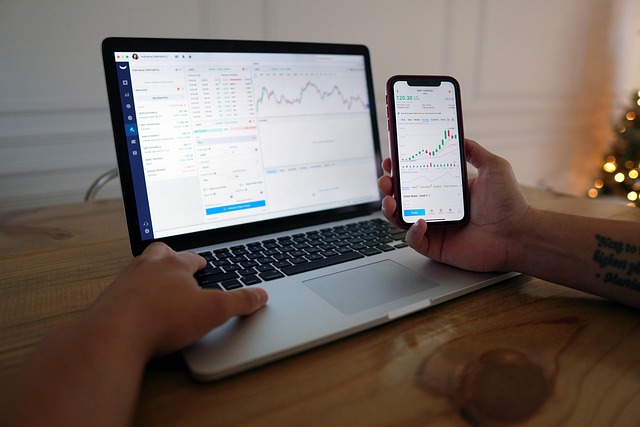The Art of Investing: Strategies for Modern Investors
Investing has evolved significantly over the years. With the rise of technology and changes in financial markets, the strategies that worked for previous generations may not be as effective today. As a modern investor, understanding the art of investing is crucial for achieving your financial goals. This article delves into effective strategies for modern investors, providing insights into how to navigate the complexities of the investment landscape.
Understanding the Modern Investment Landscape
The financial world today is marked by rapid changes. From the meteoric rise of cryptocurrency to the increasing accessibility of global investments through online platforms, understanding these elements is essential for any investor. The availability of real-time data and analytics has transformed how investors approach their decision-making processes. Additionally, macroeconomic conditions, regulatory changes, and technological advancements can significantly impact market dynamics.
Modern investors must also navigate a vast array of investment products. These include stocks, bonds, mutual funds, exchange-traded funds (ETFs), real estate, and alternative investments. Each investment tool carries its own risks and rewards, and it is vital to evaluate them based on individual financial goals, risk tolerance, and investment horizon.
Defining Your Investment Goals
Before diving into investment opportunities, it’s essential to define what you hope to achieve. Are you saving for retirement, funding a child’s education, or building wealth? Clearly defined goals will guide your investment decisions and help you establish a strategic plan.
Consider the following aspects when defining your investment goals:
- Time Horizon: Determine how long you can keep your funds invested. Short-term goals might require a different strategy than long-term objectives.
- Risk Tolerance: Assess your comfort level with risk. Generally, the potential for higher returns comes with increased risk, so understanding your tolerance is key.
- Financial Needs: Evaluate your current financial situation and future needs, helping identify the right investment products.
Diversification: The Key to a Balanced Portfolio
Diversification remains a cornerstone of modern investing. It involves spreading investments across various asset classes to mitigate risk. By diversifying, investors can reduce the impact of poor performance from any single investment on their overall portfolio.
Modern investors should consider a mix of asset classes, including:
- stocks: Historically, stocks offer higher returns than other asset classes over the long term but come with volatility.
- bonds: Typically more stable, bonds can offer fixed income and reduce portfolio risk.
- real estate: This can provide rental income and potential appreciation, diversifying away from traditional financial assets.
- alternative investments: Assets like commodities, private equity, and hedge funds can provide additional diversification, often behaving differently than traditional investments.
Adapting to Technological Advancements
Technology plays an increasingly important role in modern investing. The emergence of robo-advisors, algorithmic trading, and blockchain technology are revolutionizing how investors interact with markets and manage their portfolios.
Robo-advisors provide automated, algorithm-driven financial planning services with minimal human intervention. These platforms can analyze an investor’s risk tolerance and create a diversified portfolio, making investing more accessible for individuals without deep financial knowledge.
Additionally, the integration of artificial intelligence and machine learning is enhancing investment strategies. These technologies analyze vast amounts of data to identify patterns, forecast trends, and suggest optimal trading strategies.
The Importance of Continuous Learning
In the fast-paced realm of investing, continuous learning is vital. Financial markets are influenced by a myriad of factors, including economic indicators, geopolitical events, and shifts in consumer behavior. Staying informed and adaptable enables investors to respond strategically to changes in the market.
Modern investors should engage in ongoing education, which could include:
- reading books and articles on investing and personal finance,
- attending webinars and investment workshops,
- participating in online investment forums,
- following market news from reputable financial news sources.
Risk Management: Protecting Your Investments
While investments aim for growth, it is crucial to recognize that risk is an inherent part of investing. Effective risk management strategies can help preserve your capital and navigate market volatility.
Investors can implement risk management techniques such as:
- setting stop-loss orders: This helps limit losses by automatically selling a security when it reaches a specified price.
- reviewing and rebalancing portfolios: Regularly assessing investment allocation ensures alignment with your financial goals and risk tolerance.
- considering hedging strategies: Options and other financial instruments can protect against potential downturns.
The Role of Emotional Intelligence
Investing is not just a numbers game; it is also about managing emotions. Fear and greed can heavily influence investment decisions, often leading to poor outcomes. Emotional intelligence involves recognizing and controlling your emotions, making it an essential skill for investors.
Modern investors should practice self-awareness and mindfulness when making investment decisions. Avoiding impulsive reactions to market fluctuations and maintaining a long-term perspective can significantly impact an investment’s success.
Global Investing in a Crowded Marketplace
As barriers to entry for global investing diminish, modern investors have access to international markets. However, this opportunity comes with unique challenges, including understanding foreign regulations, currency fluctuations, and geopolitical risks.
Diversifying geographically can enhance portfolio returns and reduce dependence on any single economy. When considering international investments, thorough research is essential. Understanding local markets, companies, and economic factors will empower informed decision-making and help mitigate risks.
Ethical and Sustainable Investing
Today, many investors are recognizing the importance of ethical and sustainable investing. This approach focuses on generating financial returns while considering environmental, social, and governance (ESG) factors. Investors are increasingly conscious of how their investments impact society and the planet.
Integrating ESG criteria into investing can lead to sustainable growth and align your investments with your values. As such, modern investors should evaluate companies based on their sustainability efforts and social responsibility.
In essence, ethical investing not only seeks financial gain but also contributes positively to society, making it a rewarding approach for passionate investors.
Conclusion
The art of investing has evolved significantly, requiring modern investors to cultivate a comprehensive understanding of the financial landscape. By defining clear investment goals, diversifying portfolios, leveraging technology, continuously learning, managing risk, and considering emotional intelligence, investors can navigate this increasingly complex environment while seeking financial success.
As opportunities abound across global markets and investment products, the journey of investing can be both rewarding and educational. Embracing ethical and sustainable investment practices will not only lead to potential financial gains but also create a positive impact on the world. Therefore, by adopting these strategies and principles, modern investors can position themselves for a prosperous future.


